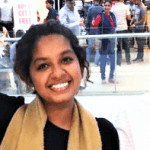
Shriya Naidu
&

Amartya Pradhan
The year 2020 was a difficult one for many people across the world. The education industry was severely affected by the pandemic that shattered the dreams of many young aspiring STEM enthusiasts. Classes moved to online modes, forcing youngsters to depend on technology to access a basic necessity – education.
Fortunately, most conferences and events also moved online thereby increasing their reach to millions of people across the world. Now, a person from Kashmir could attend a conference held in Berlin.
Two youth-led organisations, Stimulus and Project Encephalon joined forces to exploit this opportunity and create a free platform for students to meet and engage with the best minds in neuroscience through talks and competitions. This idea formed the bedrock of the NeuroNovember Convention.
The convention was hosted on the 21st, 22nd, 28th, and 29th of November, 2020 and held activities for neuroscience enthusiasts from age 13 and above. The event was brought to life with competitions such as Two-Minute Solutions, NeuroArt, NeuroFiction, and Oral and Poster presentations which were open to all participants, regardless of age, affiliation or occupation. It was fascinating and heart-warming to witness participants from varied backgrounds, cultures and age contest over topics of neuroscience!
Facing Challenges
Though the event was a grand success, hosting it was a challenge. These challenges also stemmed from a bias that led to the reluctance of support for youth-centred activities.
1. Credibility: A student or youth centred group faces a big challenge of credibility. Yes, student groups may be inexperienced hence may not produce quality work, but many respectable scientific institutes and organisations in India and abroad hold this bias for all youth-run initiatives without truly evaluating their work. This decreases our opportunity to engage with many prominent practitioners of science.
2. Team Management: With teams spread across the country, we not only faced challenges in management but also in communication and skill sharing. Technologies that were at our disposal were simply not enough to ensure effective communication and build bonds. Yet, the dedication of each team member eventually ensured the smooth functioning of the event. Our enthusiastic volunteers jumped up to any opportunity to help, upskilled themselves in limited time and worked dedicatedly towards the success of the event. A motivated team is the secret ingredient for an impeccable event.
3. Removing the Price Tag: Keeping the event free of charge solely depended on the ability of the team to get sponsorship from organizations and institutes that supported student or neuroscience ventures. While faced with credibility bias, it was the team’s determination that resulted in a free event. Our sponsors covered the charges for the hosting platform, website, abstract and schedule management, and prizes and we were grateful for their support.
4. Addressing Contemporary Issues: Highlighting underrepresented communities is a challenge for any organization or event. Even today, we face resistance from a large part of society while discussing such issues. As a diverse youth-led initiative, we felt the need to voice these issues in STEM as part of the convention and were prepared to deal with the backlash. However, the real challenge of hosting these conversations was identifying and reaching out to the underrepresented individuals, precisely because they are underrepresented!
5. Institutional Backing: One solution to the credibility bias is institutional support. Institutes and organisations in India are yet to realise the need to extend their support to organizations based outside their purview of credibility, especially those run by the youth. Until then, there will remain a huge gap between initiatives taken and support received. We were fortunate for the few Indian and International ventures that supported our cause and we hope that more institutions will step up for future youth-led endeavours.
Supporting student-led initiatives – A way forward
The youth are the strongest asset for any country as they bring in fresh perspectives to old-school problems. Youth-led initiatives provide a safe space for rearing the potential of young peers to tackle problems, innovate and lead. For instance, one can put forward their ideas without the fear of being judged or intimidated by senior folks.
Youth-led endeavours are generally motivated to address contemporary issues like inclusivity, diversity, science communication, and unconventional careers that aren’t commonly addressed by conventional establishments. Since established organizations demand hefty amounts for membership, it successfully evades a significant student representation which eventually leads to programs that aren’t relevant to the youth.
The future lies in mutual collaboration between the fresh and the experienced minds to produce reliable, relevant and egalitarian programs that equip and instil the researchers of tomorrow with the scientific curiosity required to address pressing problems of the world.
Did you miss out on the event? Fret not! Find out how it went by here.





